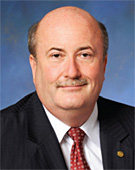
One mission of this organization is to represent the global aviation safety community in the news media. We can go on the record and say things that might not be popular all of the time. In this regard, it’s been an interesting few weeks for the communications staff at the Foundation.
There’s no need to re-hash how the story of sleeping air traffic controllers grew as the number of occurrences multiplied, the traveling public got more concerned and the U.S. Department of Transportation (DOT) got more outraged. We in the United States saw a massive number of news stories. The amount of media coverage shouldn’t surprise any of us.
What did surprise me was the immediate solution offered by DOT to put more staff in the towers, and the impression they gave that the problem was solved. I knew that solution had been tried in Canada, and it didn’t work there. I also knew that there was good research being done into fatigue and how best to prevent or mitigate it. Why was no one talking about it?
Using the bully pulpit afforded by my position at the Foundation, I starting talking about fatigue and fatigue risk management systems in a real way. To the surprise of some of the interviewers, I called for controlled rest during breaks, much like an ER doctor or a firefighter might experience. It seemed logical to me, and the results of studies on this issue backed up this position. And the media were definitely paying attention.
Within a few days, the nature of the debate had shifted and more people started calling for science-based solutions. We saw sleep experts on the cable channels. Even DOT started saying that the additional staff in the towers is simply a first step.
Finally, the issue of fatigue was getting the airing it needed. We still don’t know how DOT and the Federal Aviation Administration ultimately will act on the issue of sleep and controllers. They’ve dug in their heels on the controlled rest idea.
It’s gratifying, however, to know that we’ve helped force science into the debate.
I’ve been working on a speech that I’ll be giving in a few weeks. It’s a college commencement address, and I’m emphasizing the importance of standing up for what is right. Most of the time, in many parts of the world, what’s “right” in aviation safety isn’t met with too much debate. There is simply too much data and experience to argue against ideas like safety management systems and voluntary data sharing.
This time, however, what was “right” was politically incorrect and, at first, publicly unpopular; the idea of controller naps was mocked on late-night television. Someone had to stand up and take the punches for pointing out that the emperor has no clothes, and I’m proud that it was the Flight Safety Foundation.
Aviation safety experts, for the most part, understand that punishing someone for falling asleep and staffing a second body in a tower that sees hardly any traffic overnight isn’t the solution. The solution must be to determine the cause of the problem, figure out how to stop the problem, and in a worst case, determine how to safely mitigate it when it occurs. It is my hope that we’ve started the process of understanding fatigue in air traffic control, and that the regulators will allow the process to work.